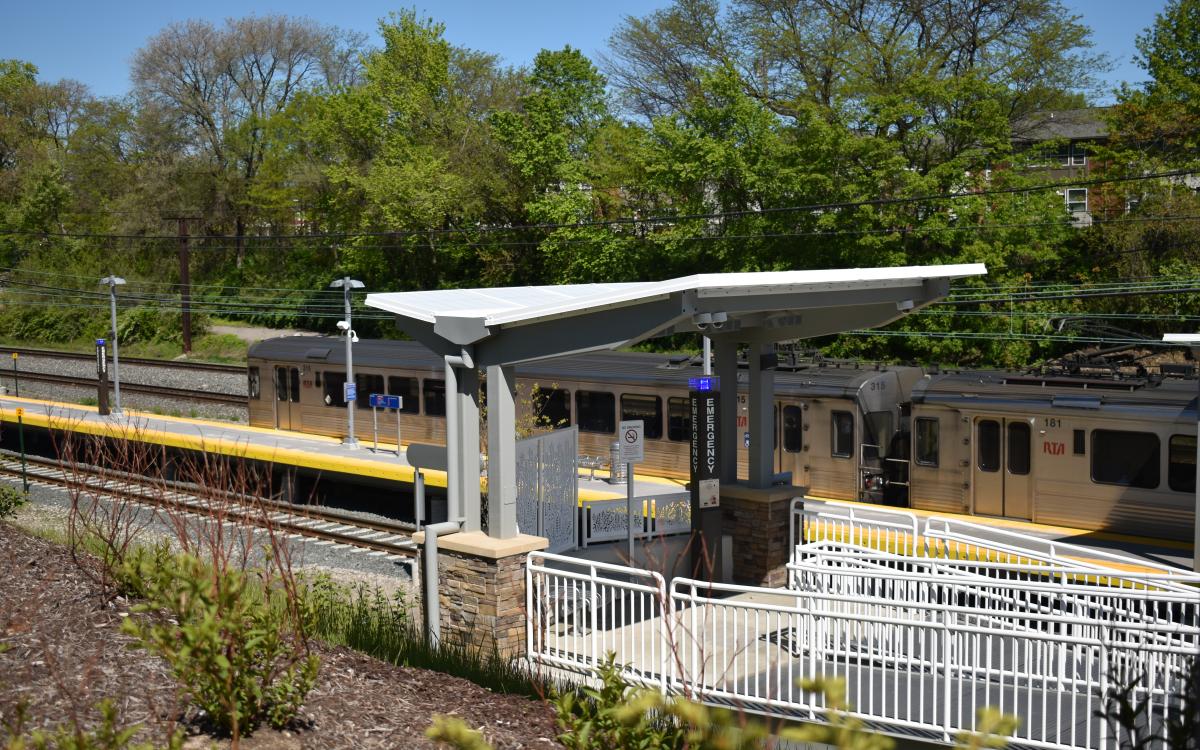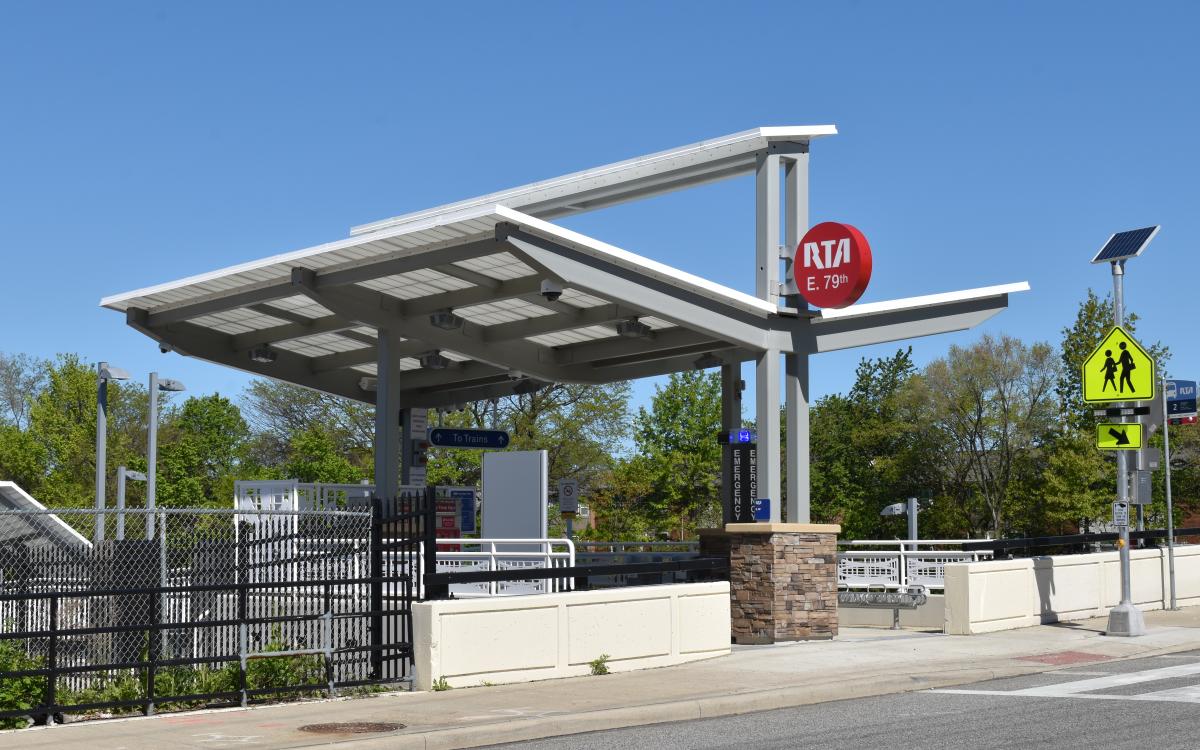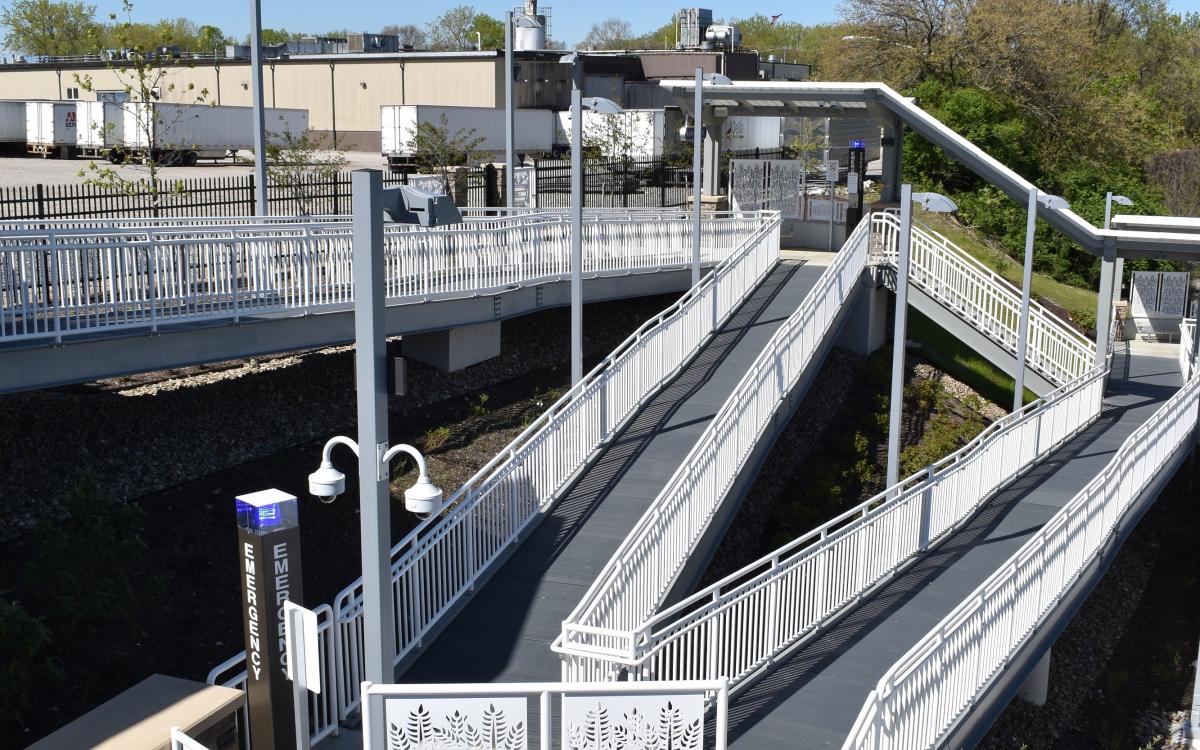Cleveland, OH
United States
Completed in March 2021 the GCRTA’s E. 79th Street Red Line Station reconstruction achieved SITES certification by transforming what was once an unsightly, abandoned railroad/industrial property, creating a more accessible, green transit system. Located in the heart of what was the “Forgotten Triangle” of urban disinvestment, the GCRTA’s new Station hopes to be a vital part of the renewal process by creating Transit Oriented Development (TOD) Opportunities for the neighborhood.
The original E. 79th Street Station had been in place since the completion of the GCRTA Red Line system in the 1950s. Over the years, a series of repairs and modifications kept the station operational, but many of its components were well past their useful life. Access to the old station was from a stair tower located off the newly reconstructed E. 79th Street Bridge. The stairs led down to the last remaining wood platform on the system.
GCRTA approached the project with four primary objectives: bring the station into ADA compliance, increase the safety and security at the station, minimize the disruption to GCRTA ridership during construction and minimize the stations impact on the environment. The key to accomplishing these objectives was to shift the main entrance off the bridge onto the hillside on the south.
In the new location, an entrance plaza serves both the station and a bus-waiting environment. Connected to the plaza, a series of ramps descend the hillside. The ramps were elevated to minimize impacts to the site. Along the ramps, larger landings, or pause points, providing customers a place to rest along the way. Once at the bottom of the ramp structure customers utilize an at-grade pedestrian track crossing protected by a railroad-crossing gate to access the stations platform.
Moving the station entrance to the south of the bridge helped to increase the safety and security at the station by creating clear site lines. The hillside also provided natural access control for the station that was reinforced with elevated ramp structures. Throughout the station, lighting levels were increased and camera and emergency call boxes added. The updated LED lighting and equipment reduces the stations on-site annual energy consumption by 30%.
Due to the location of the E. 79th Street Red Line Station within the GCRTA’s rail system, any disruption of service affects the entire system. Considering that, great care was taken in designing components to minimize any required track outages and disruptions to service. New concrete piers for the platform utilized existing platform foundations. This kept any excavation between the tracks shallow to prevent undermining of the tracks. Design of the platform access ramp between the tracks allowed placement of formwork and concrete while maintaining required train clearances. Platform and canopy structural steel frames were pre-assembled onsite and lowered into place during short train shutdown windows.
The rail platform design incorporated Fiberglass Reinforced Plastic (FRP) panels, an innovation for GCRTA. Previous station platforms are of cast-in-place or precast concrete. The FRP panels design includes a slip-resistant surface and a crowned profile to facilitate drainage. Tactile warming tiles and rub edge were factory-installed prior to shipping to the site. Because of the panel’s lighter weight as compared to their precast concrete counterpart, the contractor was able to use smaller equipment and place and secure the 254’ long platform in just under six hours. The typical precast concrete platform installation requires large cranes and a weekend shutdown, with crews working around the clock. Production of FRP platforms was relatively close in Dayton, Ohio.
Other station amenities provided at the new station are seating, bike racks, recycling receptacles, station wayfinding signage, and ticket vending machines. The landscaping incorporated native plantings to help retaining the soil while eliminating the need for irrigation as well as reducing maintenance requirements. A separate station entrance for use by major area employer was constructed off the first pause point to help promote the use of public transit over single occupant personal vehicles.
“In the past, the GCRTA has utilized LEED as our green standards, but with many of our transit station lacking any occupiable interior spaces it made certification difficult," explained Brian Temming, Greater Cleveland Regional Transit Authority, Quality Assurance Manager. "The Sustainable SITES Initiative gave us the opportunity to show our organizations commitment to protecting the environment while providing public transit services to northeast Ohio through the certification process.”



